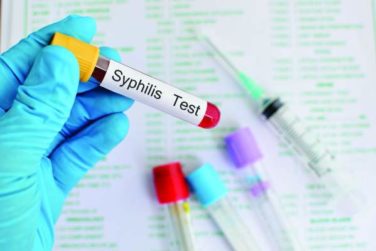AT SABCS 2014
SAN ANTONIO (FRONTLINE MEDICAL NEWS) – Male breast cancers share some important characteristics with female breast cancers: The tumors found in males are usually hormone receptor positive and of luminal A subtype, and respond less favorably if estrogen and progesterone receptor negative.
And like female breast cancers, both overall and breast cancer–specific survival rates have been increasing over the last 20 years, although not to the extent of survival improvements in women, Dr. Fatima Cardoso said at the San Antonio Breast Cancer Symposium.
Dr. Cardoso of the European School of Oncology Breast Cancer Program, Lisbon, presented the initial findings of the Male Breast Cancer International Program , a project intended to identify, characterize, and improve treatment for male breast cancers. The retrospective joint analysis is the first part of the three-step study, she said. In addition to identifying patients in the 10 countries involved (in the United States, western Europe, and Scandinavia), step one includes a collection of tumor blocks for central analysis in labs in the United States and the Netherlands.
Step two, already underway, is building a prospective international registry of all male breast cancer cases in the most recent 30 months of the study, including collection of tumor samples and blood, and a quality of life substudy.
Step three will comprise randomized treatment trials, one of which is “far along in the planning stage,” Dr. Cardoso said.
The retrospective cohort comprised 1,822 men who were diagnosed and treated for breast cancer from 1990 to 2010, with tumor assessments available for 1,483. About two-thirds of the men were older than 50 years; 25% were 75 or older. Just 2% were younger than 40 years.
Most cancers (71%) were local. Almost 60% were node negative, and 30% positive for one node. Two nodes were involved in 5% and the rest had three involved.
Breast-conserving surgery was the most common primary treatment (96%), with 4% undergoing a modified radical mastectomy. Three-fourths underwent both a sentinel node biopsy and axillary dissection; 18% had a sentinel node biopsy only, and the rest had no nodal investigation. There was a slight trend over the study period for more sentinel node biopsies alone, and less axillary dissection, but the number of men without an investigation stayed steady.
After breast-conserving surgery, all of the node-positive patients had adjuvant radiotherapy, as did 46% of the node-negative patients. Of the node-positive patients who had mastectomy, 69% received radiotherapy and 31% did not.
Adjuvant chemotherapy was administered to 70% of patients overall, with anthracyclines the most commonly used agent (43%). Others were the combination of anthracyclines and taxanes (32%); the combination of cyclophosphamide, methotrexate and fluorouracil (15%); and other unspecified regimens in the remainder.
Most men also received endocrine therapy (77%), with tamoxifen being the most common agent (88%).
Invasive ductal carcinoma was by far the most common diagnosis (about 85%). About half the tumors were grade 2; the rest were evenly split between grades 1 and 3.
The vast majority (1,053) were estrogen receptor positive with 93% having high expression. Progesterone receptor positivity occurred in 939 tumors, with 35% having high expression.
Most of the tumors were positive for androgen expression (1,027), again with high expression (88%). Two percent were human epidermal growth factor 2 (HER2) positive.
Not surprisingly, median overall survival was best in patients with nonmetastatic, nonnodal cancers (10.4 years). It was about 8.4 years for those with nonmetastatic, node-positive tumors, and 2.6 years for those with metastatic cancers.
Median overall mortality has significantly decreased over the years: About 70% of those diagnosed from 1990 to 1995 had died within 9 years, compared to about 40% of those diagnosed from 2006 to 2010. But breast cancer–specific mortality remained about the same, with less than 20% of patients dying by the end of follow-up.
Those with estrogen receptor–positive tumors did best, especially if they had high expression, while all of those with ER-negative tumors had died by 6 years after diagnosis. Findings were similar among those with androgen and progesterone receptor–negative tumors.
“Hormone receptor status had a very good prognostic value, with positive, highly expressed tumors having much better outcomes,” Dr. Cardoso said, adding that tumors in this initial phase of the study are still being examined.
She had no financial disclosures.
On Twitter @alz_gal




